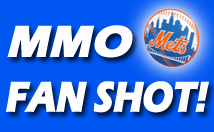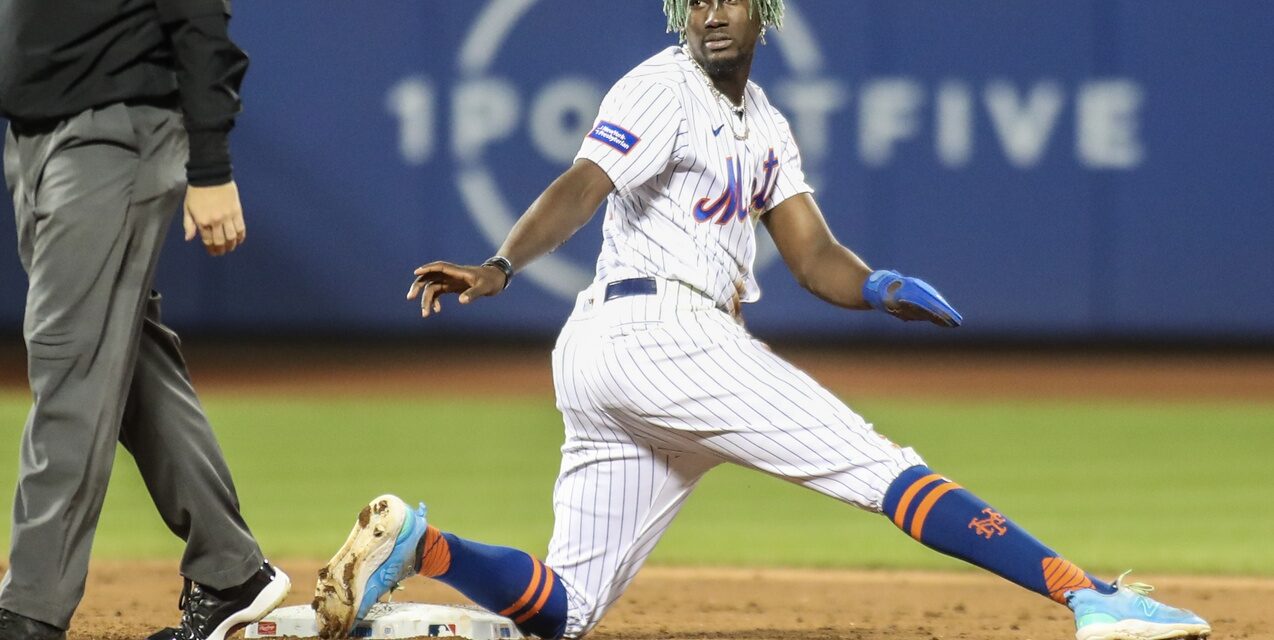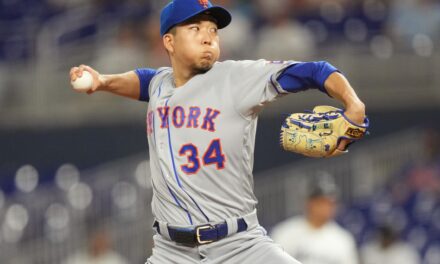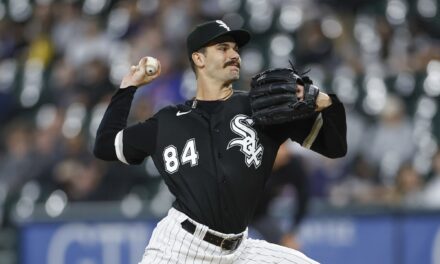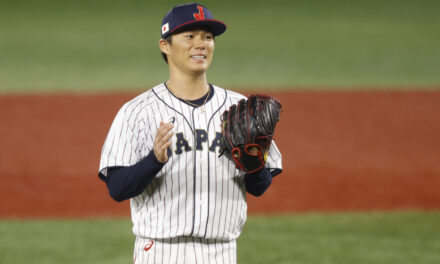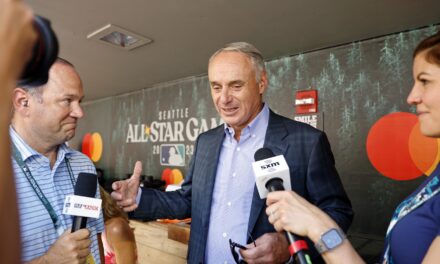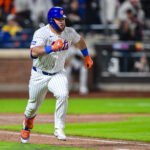This fan shot is written by Greg Jones
Ever notice how when we are looking at a new GM or manager, free agent, or a potential trade for a veteran player, the question is always raised “can he handle New York? The media, the fans, the pressure?”
This question, mind you, is asked quite seriously about middle-aged, successful industry veterans. Yet when we have a 22-year-old prospect bam into the pressure cooker with no sympathy, Keith and Ron fill those long hours dissecting every hitch and glitch of his game to millions every day. Struggle at the plate for his first month, back to Binghamton. Struggle at third, maybe he needs to be a DH or first baseman or benched for a while. Blocked by a 10-year contract at shortstop..hey! let’s make him a second baseman or outfielder. Yeah, he has Gold Glove potential at short, where he has played exclusively since he was eight years old, but he is athletic. Surely, he can learn at the major league level.
It is a mantra in MLB circles…hoard your youth, build through the farm, and develop young talent. Patiently nurture them as they mature at the major league level and at minimal salaries to allow new veteran contracts within the payroll.
But in this new Cohen paradigm…why? Does any of that apply to the new Cohen Mets? Will the Cohen Mets ever be hampered by payroll concerns? And with the expectations Cohen has set, is a high-pressure Queens team a patient, nurturing environment for rookies?
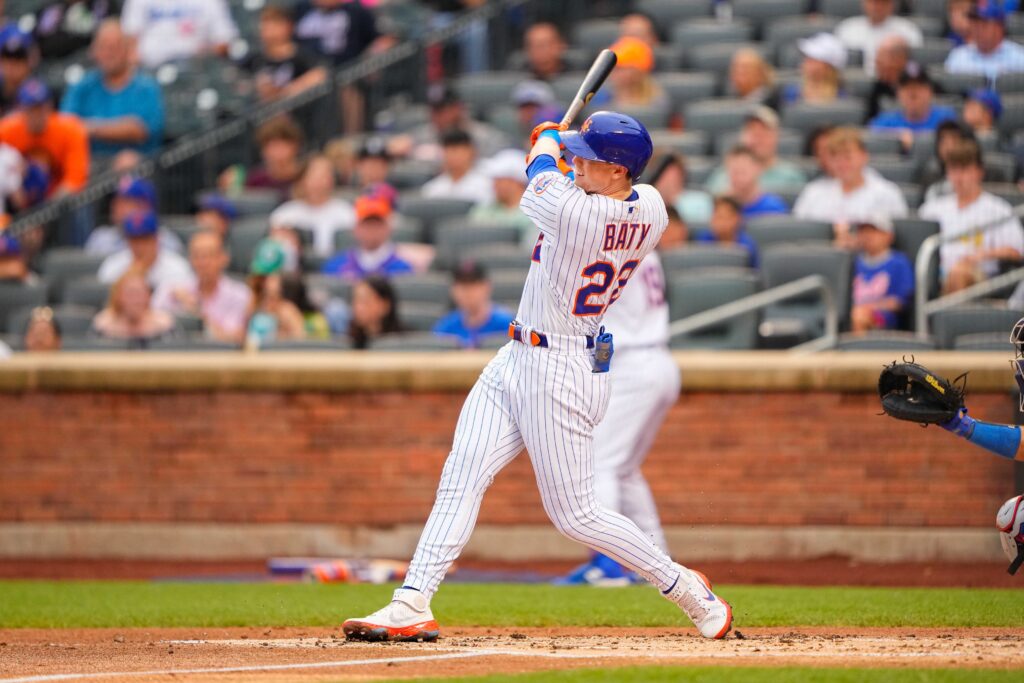
Gregory Fisher-USA TODAY Sports
Could it be that Cohen’s Queens in 2024 is the utterly “wrongest” place to break in a rookie in MLB history? And could it be that asset value is being frittered away as the trade aura of these blue chips fades under the pressure of a sea of digital criticism? As an example, I give you Brett Baty…the number one third base prospect in the minors by people who rank such things. Now…I personally only saw him play five innings of Double-A ball before a rainout. He hit two two-run homers. I had high hopes. Now I pick up the papers (or whatever the modern equivalent is) and see we are in the market for veteran third basemen…hey, maybe 40-year-old Justin Turner can still play some there, huh?
Follow the Money
Firstt off, through history, why was there always the focus in baseball on homegrown youth? Nothing but dollars. I think it is merely a relic from the days of cheap, complete control, and that has gone from forever to six years to what is effect is three, with first-year star arbs (guys that have accrued three years of service time) exercising leverage into long term deals, with teams reluctant to take it through to an often fractious hearing. Second arb stars range up from there, just one example: Max Fried actually lost his arbitration hearing for his 2023 salary and still got a $13.5 million contract. That would be the highest 2023 contract on a number of teams in 2023, including Tampa, Pittsburgh and Oakland.
What does this mean for the Mets? Opportunity. Small market teams are forced to trade talent away earlier than ever. The As, Orioles, Royals and Pirates, combined, had three players making more than $8 million last year. The stars that were traded away five years ago at age 28 are now becoming overpriced at age 25 for these small market teams, who are available to enter their prime. Juan Soto, about as promising a Hall of Famer as you will see through age 24, has been traded twice in 16 months.
Am I missing something? Is there some other benefit now to the Mets committing to the homegrown stars route? A tangible romance with fans? That doesn’t hold up when you look at many of the beloved stars in Mets history. Mike Piazza, Tommie Agee, Jerry Grote, Gary Carter, Keith Hernandez, John Franco, Ron Darling, Edgardo Alfonzo, Howard Johnson, and Al; Leiter came in by trades, and that is half the players in the Mets Hall of Fame. Doc and Straw? Yeah, how did New York treat them? Two ROYs were gone from Queens by age 29, dogged by Manhattan nightlife, self-medication, and vicious backpage headlines.
Tanks For The Memories (sorry about that)
The strategy of the twenty-teens was the tank and draft, which Houston and the Cubs notably rode to championships in their window. And the Braves got on the last tank train and built their current young core.
But read the room. Read the new guy. Even if the old draft rules were in effect, is Steve Cohen going to live through four losing seasons like the Braves? Five like the Cubs? Seven like the Astros, with three 100-loss seasons in a row?
That is all moot, though. Even in the utter “play money” world in Queens today, the new Collective Bargaining Agreement that started in 2022 introduced the draft lottery and the draft penalties for high payrolls have gutted that tactic going forward.
Look at recent events. Despite tanking to the 8th worst record in baseball in 2023, the Mets didn’t pull a lucky lottery number to dodge the ten-spot drop and wound up with the 19th pick next July. Not really bad luck…in the 8 holes, they only had a 3.9% chance at the number one pick and a 50-ish percentage chance at the top six to avoid the ten-slot drop mandated by their record-high payroll. And if they had pulled a top-six pick, their penalty would have been pushed to next year, and they would be not only barred from the lottery but unable to pick above 10th. And the future inexorably holds these payroll penalties for the Mets because…Cohen. We are well over the 2024 tax threshold already with arb obligations and have gaping, expensive holes to fill to avoid a fifth place in 2024.
And the draft scenario gets worse. If the Mets had signed Shotani, or still do sign Snell or Bellinger or one of the other top qualified free agents, they would lose their second and fifth picks next July. Should they sign two of them, they also lose their 3rd and 6th pick. The dynamics of free agent qualification means that the best free agents, the young superstars, will largely carry that draft forfeiture baggage into the free agent market. And those guys are the ones Cohen lusts after (bless his heart.) So….let Steve be Steve, and the Mets rebuild through the draft next spring would consist of the 19th pick and their fourth rounder, then seventh rounder, and so on. Not a rebuild draft…one of the worst draft positions in the draft age.
The bottom line is that even without the tanking, penalties from the Mets spending will greatly hamper their ability to hoard top draft talent. So a tank strategy like the Astros, which delivered them three number one overall picks (purchased by those seven losing seasons) is impossible. And anything even near that is impossible.
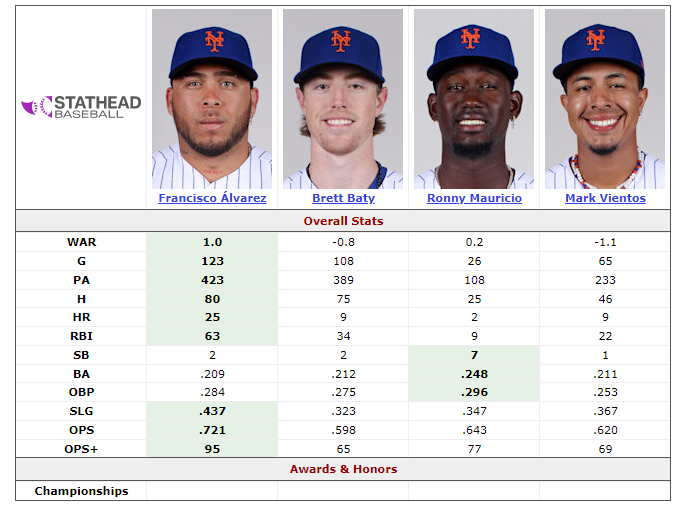
Okay, But What If?..
Even if we could grab that sort of blue chip prospect bonanza, does that work in today’s New York? Well, what about the kids this year? The Baby Mets: Álvarez, Baty, Vientos, Mauricio. These four were the closest to the show, and up they came in 2023, constituting the only promising new story of the year post-July purge, and the laser focus of the beat reporters and bloggers were on them like paint. How did they do?
To pluck one stat, looking just at offense, they all fell below the league average 100 level in OPS+. Álvarez, entering the clubhouse as the number one prospect in baseball on many rankings, was a respectable 95 in OPS+, but crashed down from his strong start with a wretched .167/.265/.318/.583 in August and September.
Baty, who had been ranked as the top third base prospect in baseball, looked overmatched at third and at the plate, and a week after the tank, he was sent to the minors after an 0-for-18 streak.
Vientos, said to be a bat in search of a glove, was a focus of media attention and pinballed around, given 19 starts at third and seven at first and a bunch of DH starts and bounced back and to the minors and weirdly, huh, didn’t perform well.
Perhaps the most exciting of the four, Ronny Mauricio, debuted with some laser velocity wallbangers. But after his hot first 50 plate appearances, he finished with .189/.246/.283/.529 over his last 50.
(Note: I can hear people saying, “Oh, c’mon, be patient. They are young. Fine…will Cohen be patient?)
In terms of fielding…I hate to even look at fielding stats in such small samples, but Baty, Vientos and Mauricio didn’t exhibit any signs of making a career based on their gloves. Even Álvarez, clearly a budding star with surprising marks in pitch framing, only threw out 12 percent of base stealers, close to last in the majors.
Would the four kids above have performed better debuting in Kansas City, Miami, or Pittsburgh? Teams that would have just put Baty at third, Ronnie at second, and Vientos at DH and played them every day? Who knows?…(but that little voice in your head just said “of course.”) And this dynamic in terms of positions is baked in the cake for the foreseeable future with the Mets. Stars like Lindor and perhaps Pete, will be signed to long 100 million plus contacts, blocking and locking up positions.
Look at shortstops in the Mets system right now. One of the highest trade value positions, and already we have Mauricio, Luisangel Acuña, and Jett Williams moving off those positions where they are at their best and highest values. Colin Houck and Jesus Baez aren’t far behind. The asset value of a plus-glove shortstop who can hit is at the top of the pyramid. That of a guy who is struggling at a new position plunges.
So, what is a strategy that may better fit the richy-rich New York Mets? I’ll get to my ideas in a sequel here.
* * * * * * *
This MMO Fan Shot was contributed by Greg Jones. Have something you want to say? Share your opinions with the best and most diverse Mets community on the web! Send your Fan Shot to [email protected]
